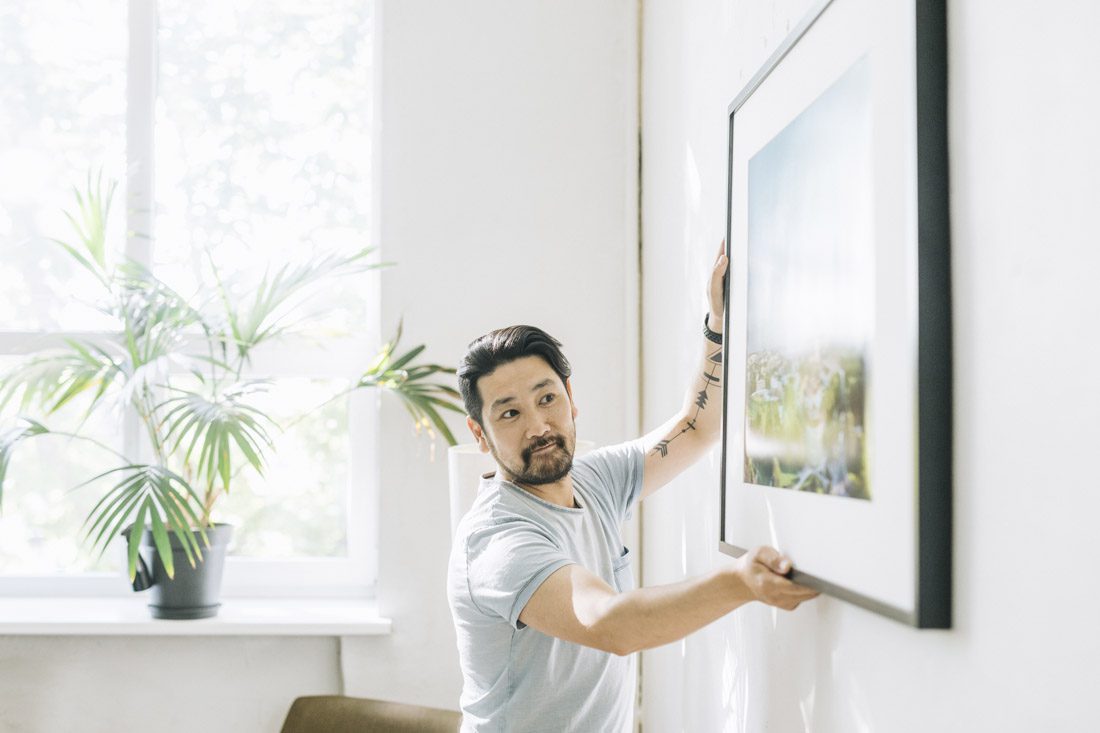EXPERTS OFFER TIPS ON HOW TO HANG WORKS OF ART.
For HangMasters operations manager Rick Figueroa, it’s not unusual to get urgent phone calls about art that has literally dropped off the wall.
“They’ll tell us something that’s been up for five or 10 years one night just came down,” he says. “You never really know what will cause that.”
But Figueroa and his colleague, Way O’Malley, have strong suspicions that the culprit was inappropriate hardware. When it comes to putting up that painting brought home from Prague or the collage the twins made in kindergarten, getting the right hardware is one of the first steps. Here, they offer other points to consider before hammering away.
Weigh in First
Which nail, screw or bolt works best is determined by weight. A lightweight poster that comes with hardware should be easy to handle. But when it comes to larger and heavier pieces, the heft is the breaking point, Figueroa says. Once the weight has been determined, select a nail that can carry it, keeping in mind that bigger isn’t necessarily better. “There are hooks that leave small holes but are still strong and heavy duty,” he says. “You don’t want to make big holes with a nail that’s too big for the job.”
A heavy piece might require more than one nail. “I’d double up on something that’s 100 pounds,” Figueroa says. “But chances are most people aren’t hanging anything that requires that sort of heavy duty support.”
Hang to be Seen
Buyers are often drawn to an artwork because it grabs them in one glance. That’s intentional, says Figueroa. “It’s spatial: You see something and think it’s really nice because it’s been strategically placed to catch your eye. But then you get it home, and it doesn’t look the same. The lighting, the height, where it’s placed in a room all play a role. Think about putting it where you want it to be seen or how it hits you when you walk in the room. And different rooms call for different items. Take time to scale things out.”
Lighten Up
Both natural and artificial light can make a piece a focal point. Whether to use a single bulb above the frame, a spotlight or a sunlit wall is personal preference. “In a dimly lit room, you could accent every piece, but some people like going big and bright like a gallery,” Figueroa says. Of course, sunlight might have detrimental effects, and while glass might provide some level of protection, art isn’t usually covered up. “There’s no such thing as ‘museum quality glass’ because most museums don’t put paintings behind glass,” he says. “Some people rotate their art to a less sunny part of the house to protect it. But if you want to highlight something that’s truly precious, it’s better under artificial light.”
Drywall Dilemma
Drywall is mounted between studs that support a room’s structure. Hanging artwork doesn’t always mean the nail must be driven in the stud—unless it’s heavy. “Again, it depends on the weight,” O’Malley says. “For most items, weight or size isn’t a problem. And often, the placement of the studs isn’t ideal.”
Help!
Calling in experts such as Figueroa and O’Malley might be a better bet than trying to tackle a project on your own. “Think about it this way: If it took three guys to put the piece in your car, you might need some help hanging it at home,” O’Malley says. “Sometimes it’s harder to hang it than to acquire it in the first place.” Hang Masters experts have tackled everything from a T.J. Maxx poster to a hand-carved Pegasus sculpture suspended from a 28-foot ceiling. “There’s nothing we won’t handle,” Figueroa says. “But whatever it is, we treat everything the same.”
HANG MASTERS
770.565.42.64
hangmasters.com
Atlanta-based writer and editor contributing to a number of local and state-wide publications. Instructor in Georgia State’s Communication department and Emory’s Continuing Education division.












